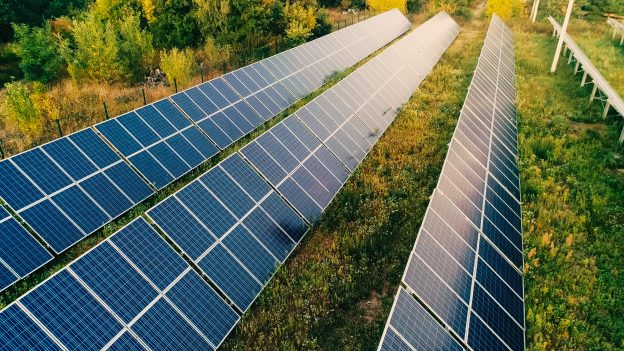In order to protect the development of the country's new energy industry, Indonesia in recent years introduced a series of trade protection policies, especially for the origin of photovoltaic modules for the extremely harsh requirements, but after the baptism of the market, Indonesia apparently recognized the error, and began to adjust the policy.
Indonesia's new PV policy
According to the latest foreign media reports, the Indonesian government recently announced a substantial relaxation of foreign investment in the photovoltaic industry entry restrictions, the new policy stipulates that the future construction of solar power plant projects in Indonesia, the local component of the project requirements from the previous about 40% significantly reduced to 20%. The "local component" includes locally produced materials, equipment or labor.
This adjustment means that solar power projects can rely more on imported products during equipment procurement and construction, especially key equipment such as high-efficiency solar panels and inverters. This move provides more room for foreign companies to enter the Indonesian market and also reduces the operating costs of the projects.
This time, along with solar pv projects, hydropower and wind power projects were also adjusted, in which the local component requirement for hydropower projects was set between 23% and 45% depending on the installed capacity, whereas previously Indonesia's localization requirement for hydropower was between 47.6% and 70.76% for wind power, while the localization requirement for wind power projects was adjusted to 15%.
These requirements have been significantly reduced compared to the previous rules, especially in the case of high-capacity hydropower projects, and this adjustment has helped to attract more large-scale international investment.
In addition to this, Indonesia has eased restrictions on the import of solar modules, with a new policy allowing solar power projects to import equipment until June 2025, provided the project operator receives ministerial approval and signs a power purchase agreement by the end of 2024, and the plant is able to go into operation in the first half of 2026.
It can be seen that the core objective of this series of policy adjustments in Indonesia is to accelerate the deployment of renewable energy projects, especially in the field of solar and wind energy. The Indonesian government hopes that by lowering the barriers to entry and attracting more foreign companies to enter this market, it will rapidly increase the installed capacity of renewable energy in order to achieve its goals set in the Comprehensive Investment and Policy Plan (CIPP) for 2030, 2040 and 2050.
Indonesia's PV Ambitions
According to the Comprehensive Investment and Policy Plan issued by Indonesia, the country plans to increase the installed capacity of renewable energy generation to 44% of the total installed capacity by 2030, and to increase this proportion to 75% by 2040 and 90% by 2050. The installed capacity of variable renewable energy sources, mainly photovoltaic and wind power, will increase from less than 1% at present to 14% by 2030, and reach 25% and 36% by 2040 and 2050, respectively.
According to the Indonesian side of the plan, as of 2040, India's renewable energy generation capacity will account for 60% of the new generation capacity. But in order to achieve this purpose, its installed capacity of solar power generation must reach 29 GW in 2030, while the installed capacity of wind power projects should also reach 8 GW, but with Indonesia's current installed capacity of photovoltaic and wind power, is still faced with at least 35 GW of shortfalls, but this also means that the Indonesian market is a huge investment demand and market potential.
Impacts and opportunities for Chinese companies
Indonesia's relaxation of restrictions on foreign investment in the photovoltaic industry has undoubtedly provided Chinese companies with broad market prospects. As Indonesia's largest trading partner and the second largest source of foreign investment, Chinese companies are playing an increasingly important role in Indonesia's renewable energy market.
In particular, in the Joint Statement on Deepening All-round Strategic Cooperation issued jointly by Indonesia and China on October 18, 2023, it is clearly mentioned that the two countries will strengthen cooperation in the fields of energy infrastructure and clean energy development. This paves the way for Chinese companies to expand their investments in Indonesia.
Despite the promising prospects of the Indonesian market, Chinese companies still have to face a number of challenges when entering the market. The first is the fierce competition from international counterparts, especially from countries such as Singapore, which have a clear advantage in terms of financing costs and loan terms.
According to a report by a relevant research organization, the cost of financing has become a key factor in determining the success or failure of renewable energy projects as project costs and power generation efficiency continue to improve.
In contrast, although China's PV module production capacity as well as the price occupies a certain advantage, but the high cost of foreign currency funds borrowing by Chinese banks and the lack of competitive lending rates, so that this link has gradually become the constraints of China's photovoltaic expansion in overseas, especially in Southeast Asia.
Therefore, the ability to participate in project financing through the formation of a syndicate with foreign financial institutions, or the ability to strengthen cooperation with the local government and enterprises in Indonesia to enhance the influence of Chinese enterprises in the local market has become the key to the success of Chinese enterprises in this market in Indonesia.
Source: https://mp.weixin.qq.com/s/_pa7XPRzz2huBzHyA79qjg







